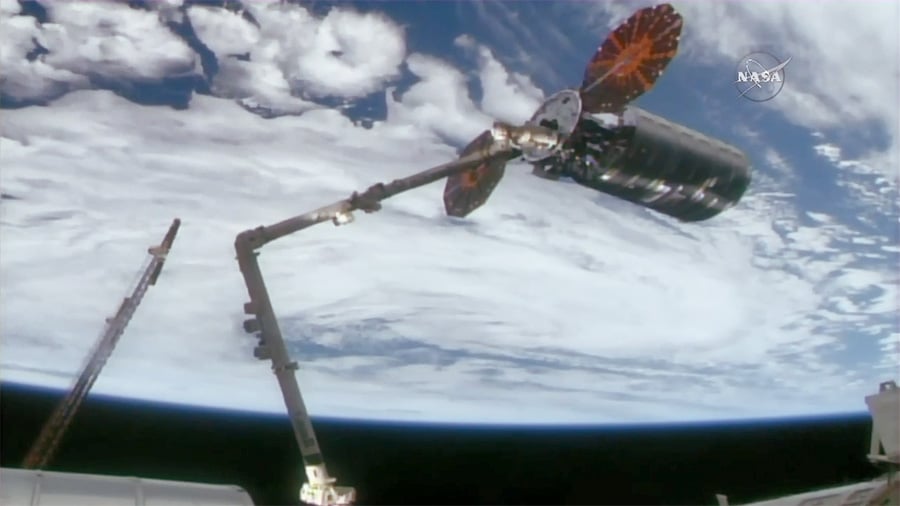
The S.S. Gene Cernan Cygnus spacecraft named in honor of the Apollo 17 lunar landing commander and launched by Orbital ATK from the eastern shore of Virgina at breakfast time Sunday, Nov. 12, arrived at the International Space Station early Tuesday morning, Nov 14, carrying over 3.7 tons of research equipment and supplies for the six person resident crew.
Continue reading

NASA's next-generation spaceplane - the Dream Chaser - recently passed a flight test, which consisted of a glide test and automated landing.
Continue reading

KENNEDY SPACE CENTER, FL - Despite suffering a significant engine testing "anomaly" and fire during test protocols with a Merlin engine that powers both stages of SpaceX's Falcon 9 rocket, the Elon Musk founded company is forging ahead with an ambitious year end launch schedule that commences this week with blastoff of the secretive Zuma mission on Wednesday evening, Nov. 15. Clearly Musk & Co. feel it is safe to proceed.
Continue reading

According to a new study, Neptune's system of moons may have been drastically altered thanks to the arrival of its largest moon, Triton.
Continue reading

A new study by a pair of Japanese researchers indicates that the asteroid that caused the extinction of the dinosaurs landed where it could do the most damage.
Continue reading

Continue reading

NASA WALLOPS FLIGHT FACILITY, VA – An Orbital ATK Antares rocket successfully blasted off this morning, Sunday, Nov. 12, from the eastern shore of Virginia on a NASA contracted mission bound for the International Space Station (ISS) carrying a Cygnus cargo ship loaded with nearly 4 tons of vital science and supplies.
Continue reading

NASA recently concluded a critical review of the Orion spacecraft and the Space Launch System, and is on track to test these systems in the coming years.
Continue reading

Continue reading

A new study conducted by a team of Russian scientists has found that microorganisms on Mars can survive the tough conditions, even near the surface.
Continue reading

Located in the northern hemisphere is the Cygnus constellation, one of the 48 constellations identified by Ptolemy and one of the 88 recognized by the IAU today.
Continue reading

NASA WALLOPS FLIGHT FACILITY, VA - The Orbital ATK Antares rocket is all set for a breakfast time blastoff from the commonwealth of Virginia to the International Space Station for NASA with a Cygnus cargo freighter named in honor of Gene Cernan, the last man to walk on the Moon.
Continue reading

A team of Brazilian astronomers recently made an unexpected discovery, a binary system consisting of a low mass-white dwarf with a brown dwarf companion.
Continue reading

KENNEDY SPACE CENTER, FL - A very busy and momentous December is ahead for SpaceX workers on Florida's Space Coast as the company plans to reactivate the firms heavily damaged pad 40 at Cape Canaveral for a NASA resupply mission liftoff in early December while simultaneously aiming for a Year End maiden launch of the oft delayed Falcon Heavy rocket from NASA's historic pad 39A.
Continue reading

This past October, scientists from all over the world used the flyby of asteroid 2012 TC4 to test out the world's advanced warning systems.
Continue reading

Continue reading

Continue reading

According to a new study by an international team of scientists, Proxima Centauri could have dust belts that indicate the presence of more planets.
Continue reading

The 5th of the Giant Magellan Telescope's 7 gigantic mirrors is being cast at the Caris Mirror Laboratory, as the GMT progresses towards first light in the early 2020's.
Continue reading

A new study by an international team of researchers has shown that Enceladus has been producing enough energy in its interior to keep a warm water ocean for billions of years.
Continue reading

 Universe Today
Universe Today


















